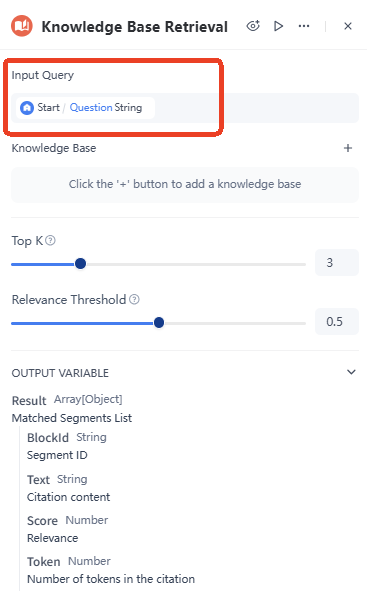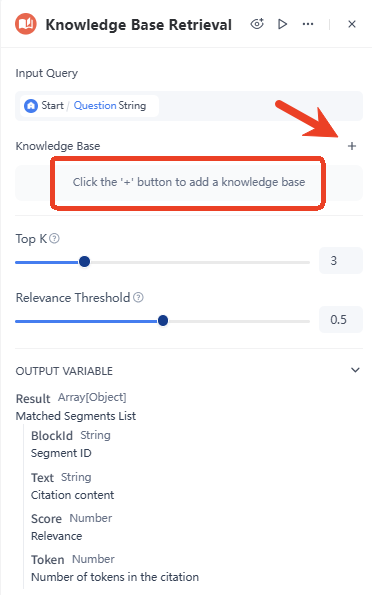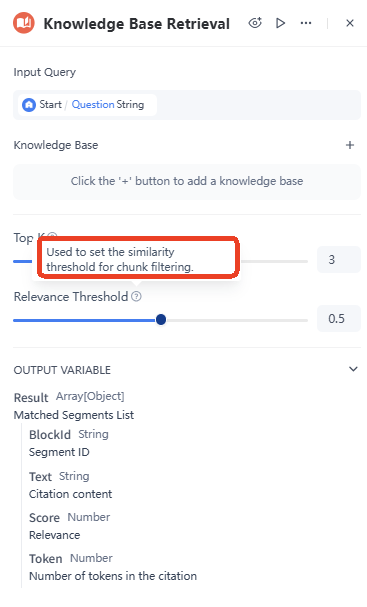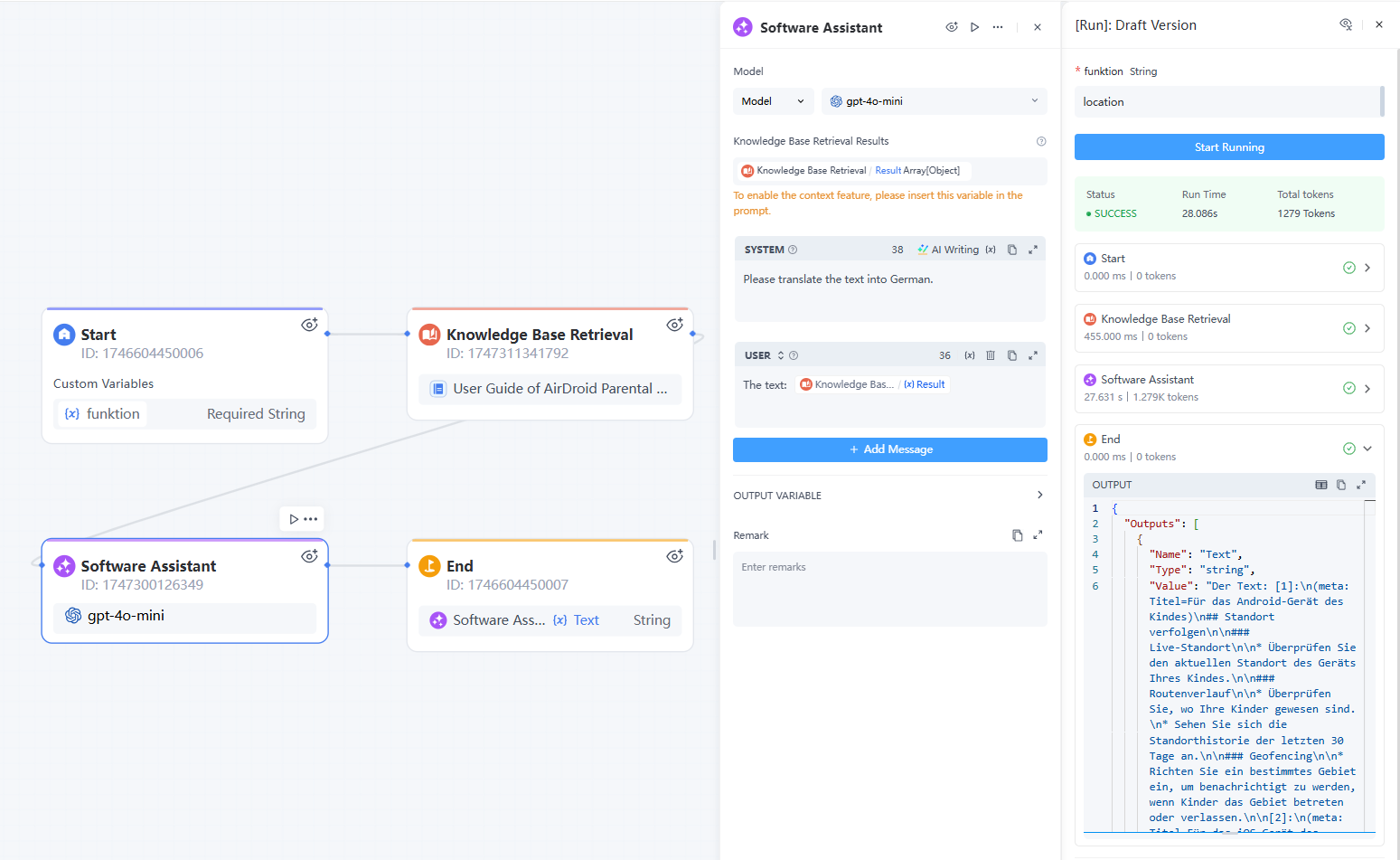Definition
The knowledge base retrieval node is used to match the questions or inputs submitted by the user (i.e., "query variables") with the pre-created knowledge base.
It retrieves the document fragments that are most relevant to the user's question and outputs them in a structured form so that subsequent nodes (such as LLM nodes) can use these fragments as context to answer or reason.
The knowledge base retrieval node is a common and important component in the GoInsight workflow. It can effectively link external document data with AI models to improve the accuracy and traceability of answers.
How to configure:
Input Query
Input Query usually represent questions entered by users, and the data needs to be of the "string" type. For example, insert a string variable named Question in the "Start" node, or use the system default query variable directly.

Knowledge Base
Click the "+" or gray button to select documents in the knowledge base. You can select up to 10 documents.
Adding a knowledge base is a necessary step for knowledge base retrieval. You can add an existing knowledge base from Goinsight. You can also create a knowledge base by following the creation process: Goinsight--Knowledge Base--New Category.

Top K
Refers to selecting the top K most similar results from the search results that meet the threshold conditions. The larger the value, the more reference fragments are returned, but if there are too many, the subsequent LLM node processing may generate long or redundant answers. The default value of Top K is 3, and the range is [1,10].

Relevance Threshold
Used to control the degree of match between text fragments and queries. The higher the threshold, the more accurate the results will be, but the number of results may be smaller; too low a threshold may bring in fragments that are not closely related to the question.
The default value of the relevance threshold is 0.5, and the range is [0,1].

Output Variable
The knowledge base search node outputs an Array[Object] type variable named Result. The matching segment list is as follows:
| Variable Name | Data Type | Description |
|---|---|---|
| BlockId | String | Unique ID of the quoted snippet |
| Text | String | Citation content, i.e. the specific text content |
| Score | String | Similarity score between the text snippet and the query |
| Token | String | The number of tokens contained in the quoted fragment |
Common usage scenarios
- Build a customer service question-and-answer system based on the enterprise knowledge base.
- Knowledge base retrieval is a prerequisite for the LLM node. After the user asks a question in the dialogue interface, the knowledge base retrieval node first searches for relevant answers in the enterprise document library, then passes the retrieval results to the LLM node, allowing the model to provide targeted answers based on the incoming knowledge base content.
Simple case display
AirDroid Parental Control Product Function Lookup: Make it convenient for users to find the specific functions of AirDroid Parental Control through a knowledge base search, and then translate the findings into German.
- Start node: Add custom variable "function".
- Knowledge Base Search: Add knowledge base documents such as "User Guide of AirDroid Parental Control".
- LLM: Write prompt such as:
- SYSTEM:Please translate the text into German.
- USER: Insert the knowledge base search result variable "Result".
- End node: Select the LLM output variable "Text".

Note
- Make sure the query variable is of type String and the knowledge base is selected.
- Make sure the name of the added knowledge base meets the system requirements to avoid special symbols affecting the display.
- If you make major updates to the documents in the knowledge base (such as deletions or batch additions) after the process is established, consider retesting the retrieval results.
Leave a Reply.